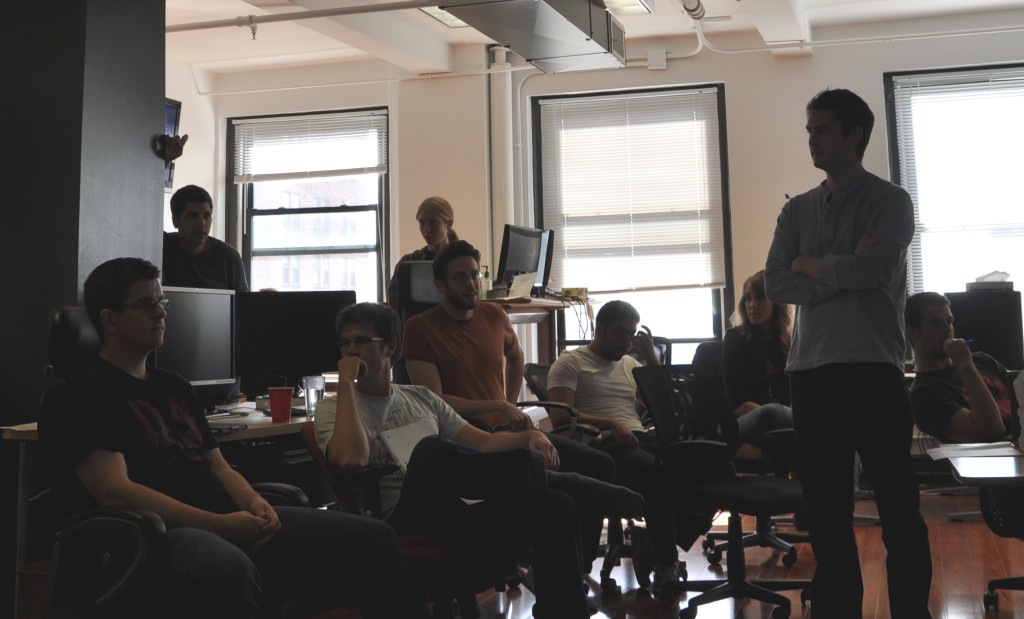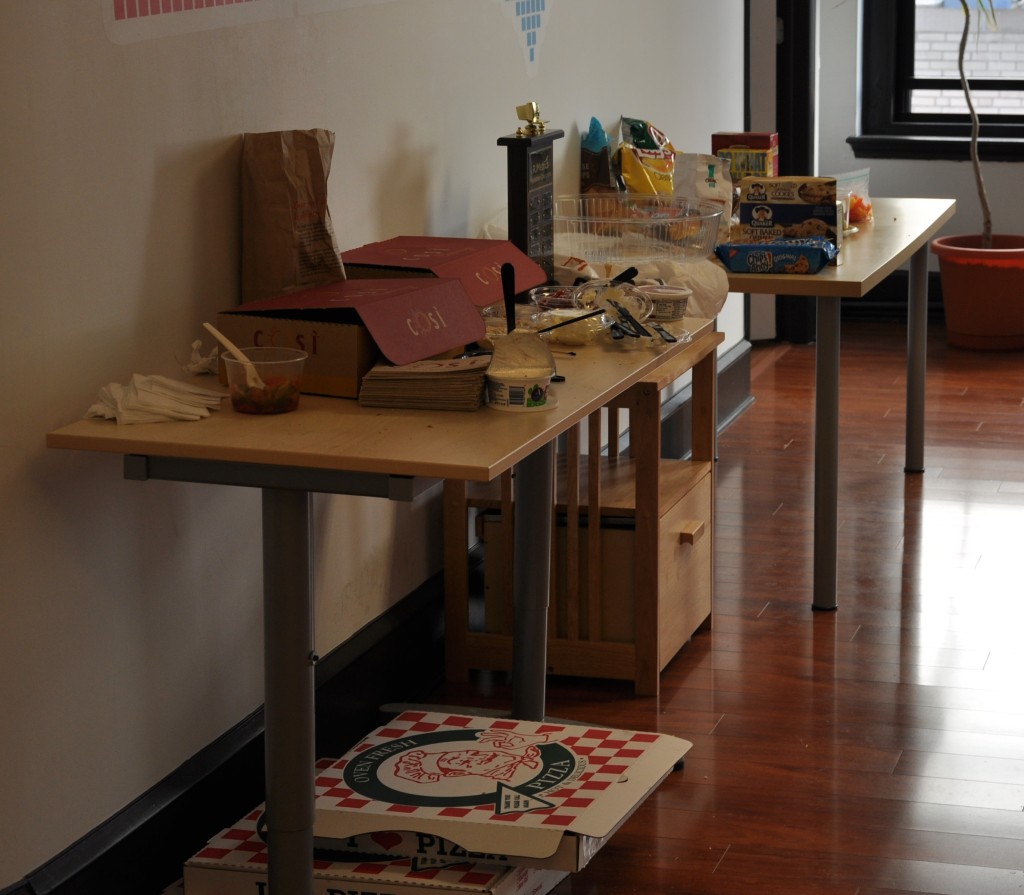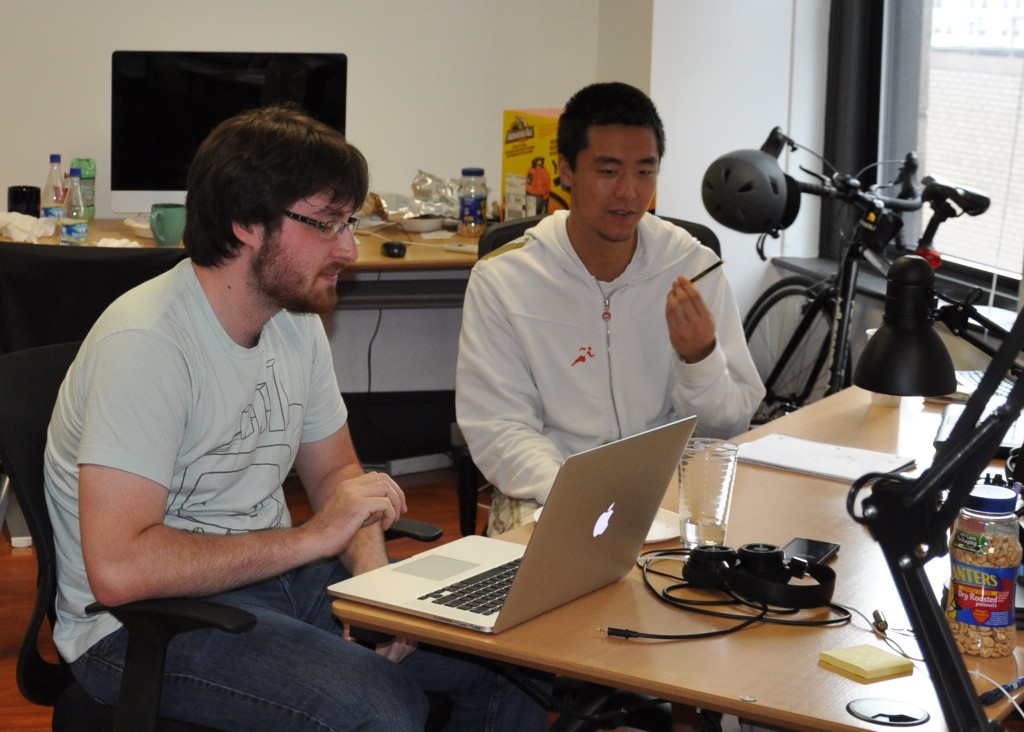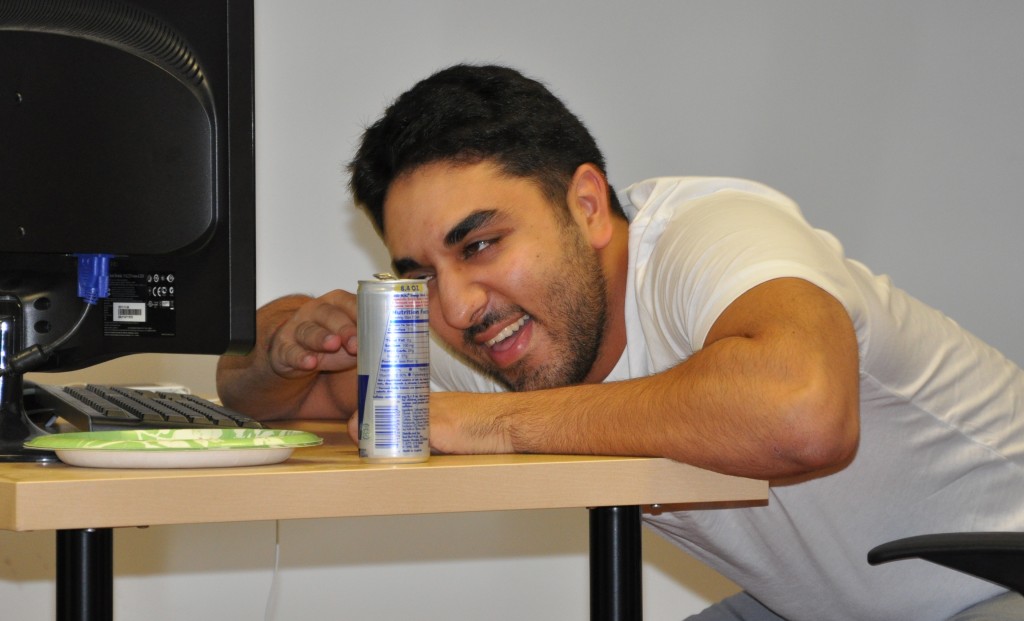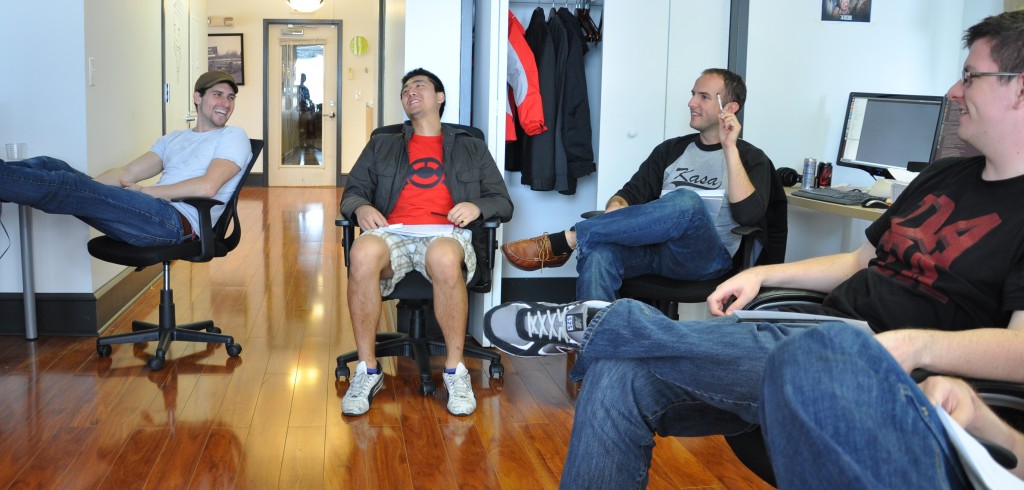This past weekend, we had one of the most successful events in our company’s history: 16 team members participated in a 24-hour Hackathon. With a massive trophy and a fancy steak dinner on the line, everybody came to win. 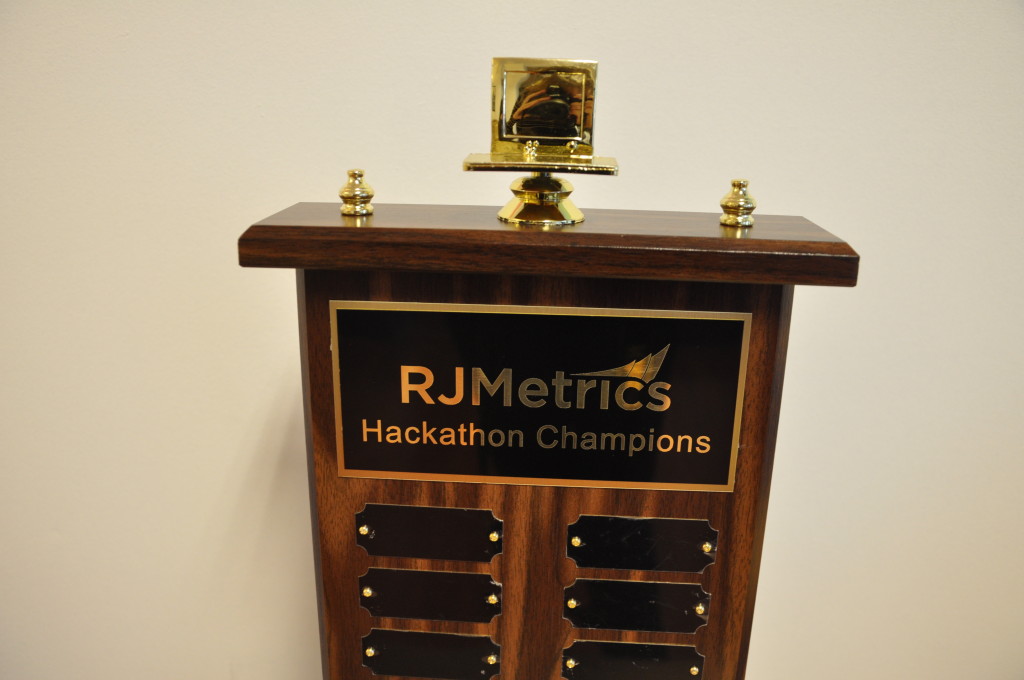
The Rules
This was our first Hackathon, so we asked our friends at other startups about their own best practices. We settled on the rules below.
Logistics:
- Everyone in the company is encouraged to participate, but it’s not mandatory for anyone.
- All normal work except for time sensitive customer support should stop for participants.
- The event kicks off at noon on Friday and ends with “pencils down” at noon sharp on Saturday. Demos and voting will immediately follow.
- Hackathon projects can be literally anything related to the company in some way. Code, prose, images, audio, video, data analyses, web pages, physical objects and anything else are OK.
- Participants can brainstorm ideas and form teams at any time between the announcement and the start of the Hackathon. The definitive teams need to be documented no later than one hour after the start of the Hackathon.
- Teams can be any size with any mix of company role.
- Normal testing/feedback/QA/review rules are not mandatory for work done during the Hackathon.
- Hackathon projects might end up being re-written, changed, becoming a core part of what we do, or being completely discarded after the Hackathon.
- Open source technology may be used as a component of your project.
- Demos take place at the end. Each team gets up to 5 minutes for a demonstration and up to 5 minutes for questions. Presentation order will be randomly drawn.
- Vote for the team that you feel generated the most value for RJMetrics during the time of the Hackathon. If most of the work was done ahead of time, but the final 5 percent was done during the Hackathon, they get 5 percent of the credit.
- All Hackathon participants will cast votes in the style of instant runoff voting, but they cannot vote for their own team.
- The winning team get their names on a trophy and a $300 gift card to Del Friscos. The trophy will circulate among the desks of the winners until the next Hackathon, á la the Stanley Cup.
The Projects
In the end, eight submissions were presented. Our customers should keep an eye out for some of these making their way into our product in the coming weeks.
Adding medians and percentiles to our dashboards: medians aren’t native functionality in most SQL languages, which required the implementation of special stored procedures to make them work.
Automated Training: a team used Kera.io to build interactive online tutorials in which new users can learn by manipulating their own dashboard environments.
User Community: a tightly-integrated online community for user discussions and sharing best practices.
Responsive iPad UI: a new user interface for our dashboards that allows iPad users to have an even easier navigation experience in our product.
More Data Sources: integration with Zapier to allow us to easily connect with third party APIs like Shopify, Salesforce.com and Zendesk.
Sales Video: this sweet video was built using PowToon and VoiceBunny and may soon be appearing on an A/B test on our homepage.
New Logo: an impressive prototype for a new RJMetrics logo.
MySQL to MongoDB Query Translator: a tool to translate a traditional MySQL query into its eqivalent in MongoDB.
The Results
Our main conclusion from this event: Hackathons are awesome. The time flew by, we all had tons of fun and the output was extremely impressive. It reaffirmed to everyone that there really are no weak links on this team– everyone was a real competitor.
The Query Translator and iPad UI teams took home first and second place, and both will be enjoying steaks at Del Frisco’s soon.
As for the rest of the crew, an anonymous follow-up survey revealed that over 90 percent of participants would be “extremely likely” to participate in another Hackathon. At this rate, our next one may be just around the corner.

